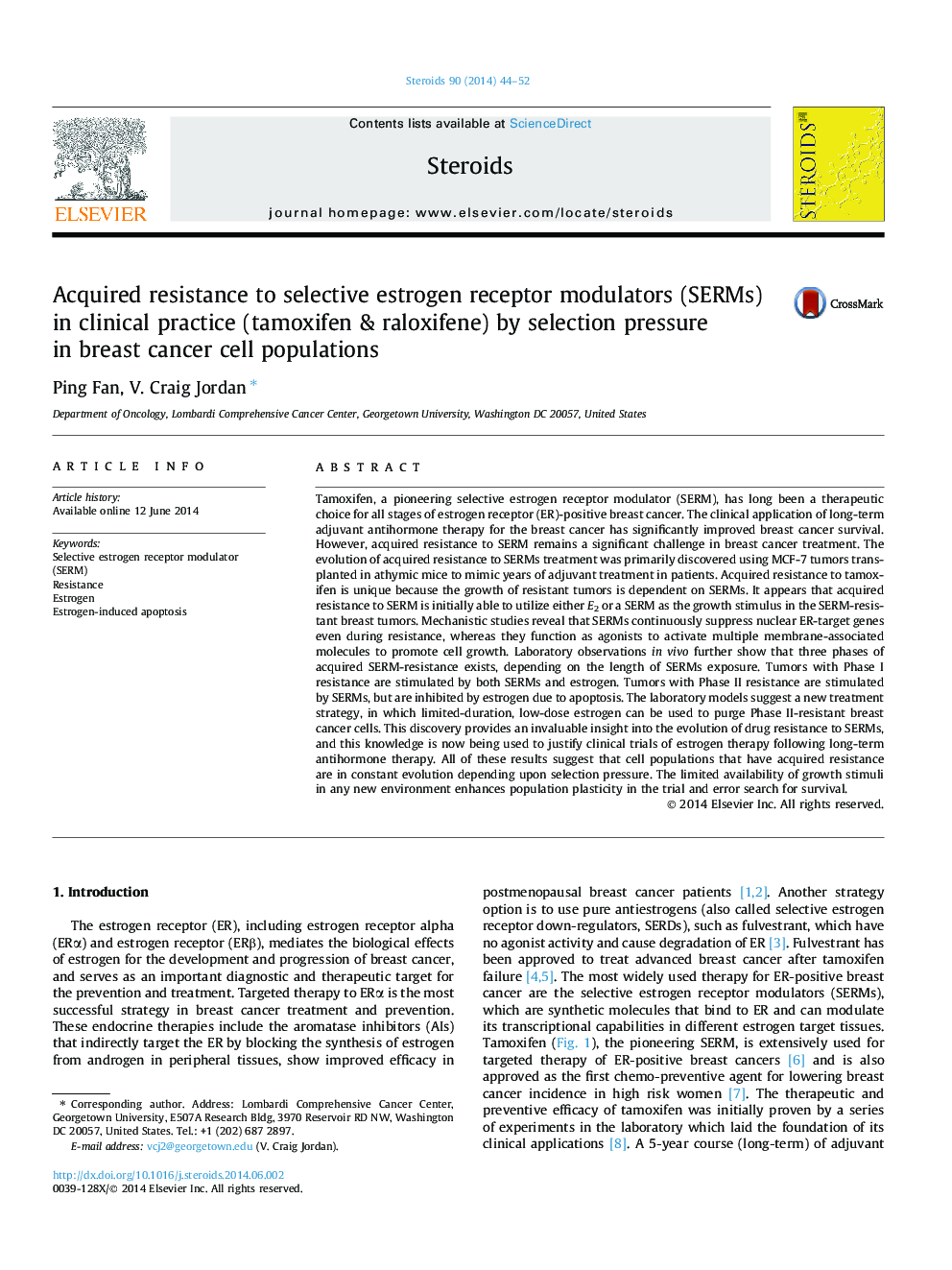| کد مقاله | کد نشریه | سال انتشار | مقاله انگلیسی | نسخه تمام متن |
|---|---|---|---|---|
| 2029189 | 1542717 | 2014 | 9 صفحه PDF | دانلود رایگان |

Tamoxifen, a pioneering selective estrogen receptor modulator (SERM), has long been a therapeutic choice for all stages of estrogen receptor (ER)-positive breast cancer. The clinical application of long-term adjuvant antihormone therapy for the breast cancer has significantly improved breast cancer survival. However, acquired resistance to SERM remains a significant challenge in breast cancer treatment. The evolution of acquired resistance to SERMs treatment was primarily discovered using MCF-7 tumors transplanted in athymic mice to mimic years of adjuvant treatment in patients. Acquired resistance to tamoxifen is unique because the growth of resistant tumors is dependent on SERMs. It appears that acquired resistance to SERM is initially able to utilize either E2 or a SERM as the growth stimulus in the SERM-resistant breast tumors. Mechanistic studies reveal that SERMs continuously suppress nuclear ER-target genes even during resistance, whereas they function as agonists to activate multiple membrane-associated molecules to promote cell growth. Laboratory observations in vivo further show that three phases of acquired SERM-resistance exists, depending on the length of SERMs exposure. Tumors with Phase I resistance are stimulated by both SERMs and estrogen. Tumors with Phase II resistance are stimulated by SERMs, but are inhibited by estrogen due to apoptosis. The laboratory models suggest a new treatment strategy, in which limited-duration, low-dose estrogen can be used to purge Phase II-resistant breast cancer cells. This discovery provides an invaluable insight into the evolution of drug resistance to SERMs, and this knowledge is now being used to justify clinical trials of estrogen therapy following long-term antihormone therapy. All of these results suggest that cell populations that have acquired resistance are in constant evolution depending upon selection pressure. The limited availability of growth stimuli in any new environment enhances population plasticity in the trial and error search for survival.
Journal: Steroids - Volume 90, 15 November 2014, Pages 44–52